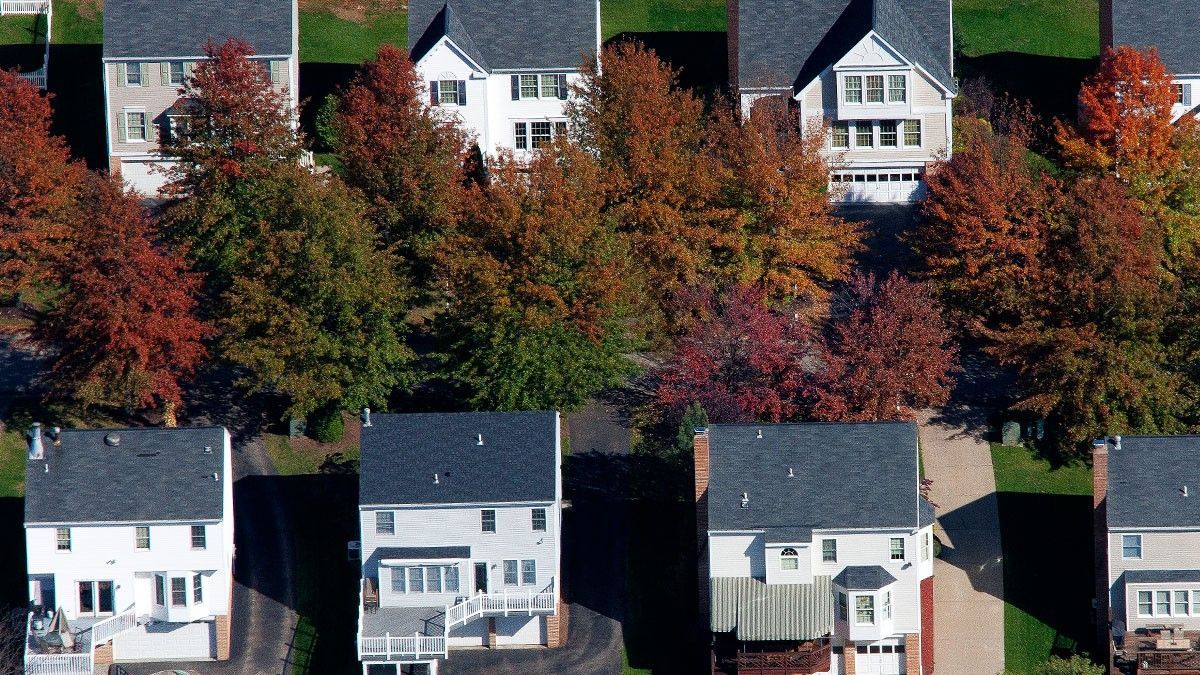Affordability Crunch: Where Middle-Class Buyers Can Afford Homes the Most-and the Least
Today's homebuyers are learning that finding a move-in ready home in a good location that they can comfortably afford is about as rare as a winning Powerball ticket.
A dire housing shortage has kept prices strong and competition fierce among buyers despite high mortgage interest rates. That's left less than a quarter of the roughly 1.1 million home listings within financial reach of the typical American household, according to a recent joint report from the National Association of Realtors® and Realtor.com®.
The housing market is short about 320,000 listings within the price range of buyers earning the median household income of $75,000 a year. These buyers can generally afford homes up to $256,000. (Listings for single-family homes, condos, townhomes, row homes, and co-ops included only existing homes and did not encompass new construction.)
"The country has the largest shortage of homes in the price range that middle-income buyers can afford," says NAR Senior Economist Nadia Evangelou. "That can explain why the competition is strongest for these homes.
"We hear again and again that in order to address the housing affordability issue we need to add more housing to the market," she adds. "We need to add more homes that middle-income buyers can afford."
Even those making $100,000 can afford only about 38.6% of the homes on the market. And those needing mortgages are faced with rates nearing 7% for 30-year fixed loans, pushing monthly mortgage payments up into the stratosphere.
The problem has worsened significantly over the past five years. In 2018, there were about 810,000 homes on the market that middle-income buyers could afford. That's compared with nearly 263,000 in April of this year.
The affordability crunch is even worse for people of color. About two-thirds of Black Americans and 59% of Hispanic Americans have household incomes below $75,000. That's compared with 48% of white Americans and 37% of Asian Americans.
"Our country needs to add at least two affordable homes for middle-income buyers for every home listed for upper-income buyers," Evangelou says.
Where middle-income buyers can find the fewest affordable homes for sale
San Jose, CA Getty Images
Not surprisingly, the nation's most expensive metropolitan areas had the fewest homes priced for middle-income buyers. In the whole state of California, just 3.7% of all home listings in April were affordable for buyers earning $75,000 or less.
The issue was the most acute in Silicon Valley's San Jose, where there was just one home listing priced for buyers earning $75,000 in the entire metropolitan area. (NAR and Realtor.com looked at the 100 largest metros for their analysis. Metros include the main city and surrounding towns, suburbs, and smaller urban areas.)
The lack of affordable homes isn't surprising as the median price in the metro was $1.53 million in May, according to Realtor.com data, which includes new construction.
In Oxnard, CA, 0.2% of homes were affordable for middle-income buyers. It was 0.6% in San Diego, 1% in San Francisco, and 1.2% in Los Angeles.
However, residents in these more expensive areas generally make more money to keep up with the higher cost of living. The median household income in these areas is typically more than $100,000, says Evangelou.
Even in less expensive, yet still pricey areas, there was a dearth of real estate priced for middle-income buyers: just 1.2% of homes in Seattle; 1.3% of homes in Austin, TX; 2% of homes in Boise, ID, and Salt Lake City; and 2.6% of homes in Sacramento, CA.
"In these very expensive areas, especially middle-income buyers can afford to buy very few listings," says Evangelou. "It's very difficult."
Where middle-income buyers can find the most homes for sale
Youngstown, OH Getty Images
Buyers on a budget will find the greatest selection of affordable homes in the cheaper parts of the country, such as the Rust Belt and Deep South.
In West Virginia and Ohio, more than half of the homes for sale in April were affordable for middle-income buyers. About 59.3% and 55.6% of listings were priced right respectively in those states.
"Some of these areas have an oversupply of housing," says Evangelou.
In the Youngstown, OH, metro, nearly three-quarters of the homes for sale, about 72%, were within reach of middle-income buyers. In May, the median home price in the metro was $162,450—about a third of the national median price tag of $441,445 in May, according to Realtor.com data.
The metro was followed by Akron, OH, at 61.4%; Toledo, OH, at 60.7%; Cleveland, at 58.6%; and Syracuse, NY, at 54.4%. Rounding out the top 10 were Scranton, PA, at 53.5%; Dayton, OH, at 53%; Pittsburgh, at 52.2%; Rochester, NY, at 51%; and Detroit, at 49.3%.
"Ongoing high housing costs and the scarcity of available homes continues to present budget challenges for many prospective buyers, and it’s likely keeping some buyers in the rental market or on the sidelines," Realtor.com Chief Economist Danielle Hale said in a statement.
"Those who are able to overcome affordability constraints may be increasingly drawn to newly constructed homes or to the suburbs and beyond, both of which may offer buyers more realistic opportunities for homeownership."
The post Affordability Crunch: Where Middle-Class Buyers Can Afford Homes the Most—and the Least appeared first on Real Estate News & Insights | realtor.com®.
Source: SFGATE


